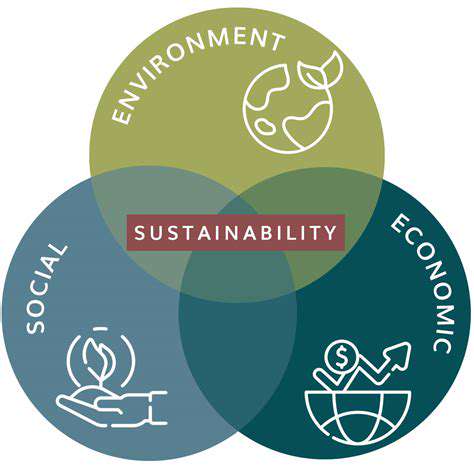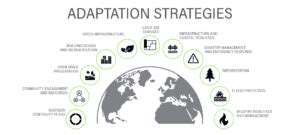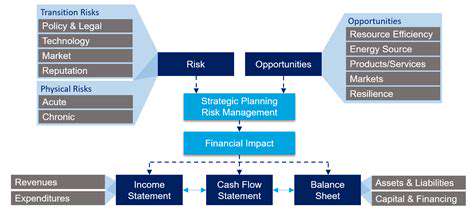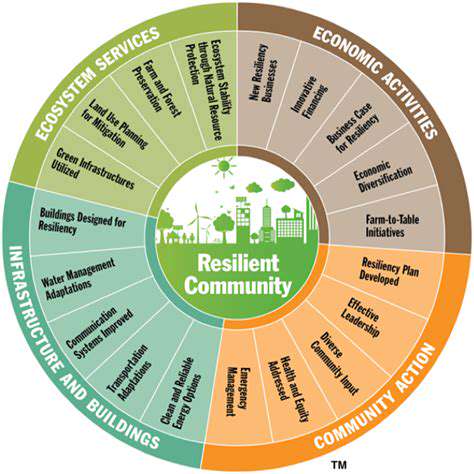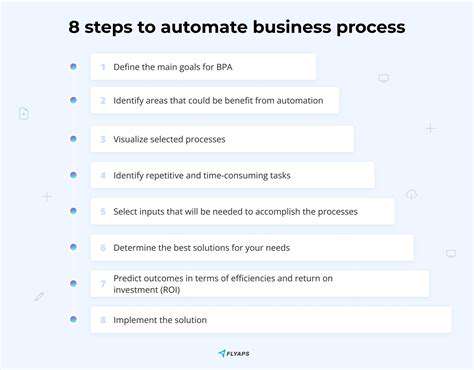Stranded Assets: Climate Risk for Real Estate Portfolios
The physical manifestations of climate change are becoming increasingly visible and impactful. Coastal erosion, intensified hurricanes, and prolonged droughts are just a few examples of the direct threats to real estate assets. These events can lead to significant property damage, impacting not only the immediate value of the property but also the long-term viability of the investment.
Furthermore, the frequency and severity of extreme weather events are increasing, resulting in a greater likelihood of substantial financial losses. Understanding the specific climate risks associated with a particular location and property is crucial for mitigating potential harm and optimizing investment decisions.
Financial Implications: Valuations and Insurance
The financial implications of climate risk extend beyond the immediate costs of repairs and rebuilding. Property valuations are being impacted by the increasing likelihood of future damages, leading to lower market values for vulnerable properties. This, in turn, affects the availability and cost of financing for these properties, creating a cascading effect throughout the real estate market.
The insurance industry is also grappling with the rising costs associated with climate-related claims. As extreme weather events become more frequent and intense, insurance premiums are likely to increase significantly, potentially making certain properties financially unviable.
Regulatory Landscape and Policy Changes
Government regulations and policies are playing an increasingly important role in shaping the future of climate risk in real estate. New building codes, zoning restrictions, and environmental regulations are being implemented to mitigate the impacts of climate change. Understanding these evolving regulations and their implications for specific properties is essential for investors and developers.
Consumer Behavior and Shifting Demand
Consumer preferences are evolving as awareness of climate change grows. Potential buyers and renters are increasingly considering the environmental sustainability of properties and the resilience of the surrounding area to climate risks. This shift in consumer behavior could lead to a higher demand for properties in less vulnerable locations and a decreased demand for properties in areas at high risk from climate change.
Understanding these shifts in consumer demand and preferences is essential for adapting to the changing landscape and maximizing returns on real estate investments in the face of climate risk.
Identifying and Assessing Climate-Related Risks for Real Estate Portfolios
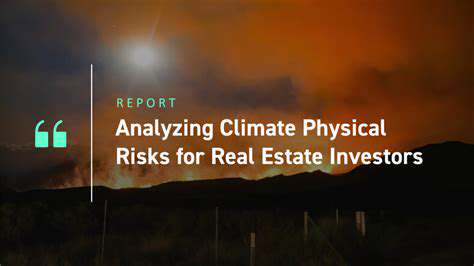
Understanding the Scope of Climate Change Impacts
Climate change is no longer a distant threat; its effects are being felt globally, impacting everything from agriculture and water resources to human health and infrastructure. The scale and complexity of these impacts require a multifaceted approach to both identification and assessment, encompassing a wide range of disciplines and stakeholders. Understanding the intricate connections between climate variables and societal systems is crucial for developing effective mitigation and adaptation strategies. This involves analyzing historical trends, projecting future scenarios, and evaluating the vulnerabilities of various sectors.
Identifying the specific ways climate change manifests itself, such as increased frequency of extreme weather events, rising sea levels, or shifts in precipitation patterns, is a critical first step. Accurate assessments of these impacts are essential for prioritizing interventions and allocating resources effectively.
Methods for Identifying Climate Change Indicators
A range of methods are used to identify and track climate change indicators. These include analyzing climate data from various sources, such as meteorological stations, satellite observations, and historical records. These data sets offer insights into long-term trends and short-term fluctuations that provide valuable information about the changing climate. Furthermore, comparing these data to established baseline values helps pinpoint deviations and assess the magnitude of change.
Employing sophisticated statistical models and predictive analytics is crucial for forecasting future trends and identifying potential risks. These models can take into account various factors, including greenhouse gas emissions, natural climate variability, and human activities, to project future climate scenarios. This allows for a more comprehensive understanding of the potential consequences of climate change and informs decision-making processes at local, regional, and global levels.
Assessing Vulnerability and Resilience
Assessing the vulnerability of specific regions and communities to the impacts of climate change is an essential aspect of the overall process. This involves considering various factors such as socioeconomic conditions, infrastructure, and adaptive capacity. Understanding how these factors interact with climate change impacts is critical to developing effective adaptation strategies.
Identifying communities and systems most vulnerable to climate change is key to focusing efforts on risk reduction and building resilience. This involves considering the specific challenges faced by different populations and developing tailored strategies to address their needs.
Developing Strategies for Mitigation and Adaptation
Once the impacts of climate change are identified and assessed, strategies for mitigation and adaptation need to be developed. Mitigation strategies focus on reducing greenhouse gas emissions to limit future warming. This includes transitioning to renewable energy sources, improving energy efficiency, and promoting sustainable land use practices.
Adaptation strategies focus on adjusting to the unavoidable impacts of climate change. This may involve developing drought-resistant crops, building seawalls, or implementing early warning systems for extreme weather events. Effective adaptation requires a proactive and integrated approach, encompassing a broad range of stakeholders and perspectives. Successful mitigation and adaptation efforts necessitate ongoing monitoring, evaluation, and adjustments to ensure their effectiveness in the face of a changing climate.
Interactive quizzes are a powerful tool for engaging your audience. They provide a fun and interactive way to learn about your brand or product. By making your content more interactive, you can improve audience retention, boost engagement, and ultimately drive conversions. Interactive quizzes can be tailored to a wide variety of topics, from product knowledge to personality assessments, making them versatile for various marketing strategies.
Adapting Strategies to Mitigate Climate Risks in Real Estate Investments

Adapting Strategies for Minimizing Clutter
Clutter, whether physical or digital, can significantly impact productivity and well-being. Effective strategies for minimizing clutter involve more than just tidying up; they require a shift in mindset and consistent effort. Understanding the root causes of clutter, such as poor organization systems or impulsive purchasing, is crucial for developing lasting solutions. Implementing a proactive approach, rather than reacting to the accumulation of items, is key to preventing clutter from overwhelming our lives.
A crucial component of effective clutter mitigation is establishing clear and consistent organizational systems. This includes designating specific spaces for items, implementing efficient storage solutions, and regularly reviewing and decluttering. Regular decluttering sessions, even if short, can prevent small items from accumulating into large problems. This approach helps to maintain a sense of order and control, which in turn reduces the feeling of being overwhelmed by clutter.
Prioritizing and Decluttering Effectively
Prioritizing items based on their importance and usefulness is a fundamental aspect of decluttering. This involves asking yourself questions like, Do I need this item? and When was the last time I used this? By discarding items that are no longer serving a purpose, you'll create more space and reduce the visual and mental clutter. This process can be emotional, so it's important to approach it with a mindful and compassionate attitude.
Once you've identified items to declutter, it's important to implement a systematic approach. Whether it's a donation drive, a trash run, or selling unwanted items, a well-defined method will ensure that the decluttering process is efficient and doesn't become overwhelming. A systematic approach reduces the stress associated with the task and promotes a sense of accomplishment.
Digital Clutter Management
Digital clutter is just as detrimental to productivity as physical clutter. It involves managing files, emails, and applications that are no longer needed. Regularly deleting unnecessary files and organizing folders is essential for maintaining a productive digital workspace. Implementing effective file naming conventions and utilizing cloud storage to back up important files are crucial steps.
Email management is another critical aspect of digital clutter management. Unsubscribing from unwanted newsletters, archiving old emails, and using email filters are key strategies for keeping your inbox manageable. Effective email management significantly reduces distractions and improves focus.
Creating a Sustainable System
Creating a sustainable system for managing clutter is crucial for long-term success. This involves establishing routines and habits that prevent clutter from accumulating in the first place. Implementing a one in, one out rule for acquiring new items is a powerful tool for preventing the accumulation of unwanted possessions. This could involve setting a budget for purchases or establishing a decluttering schedule. Reviewing your systems on a regular basis can help you adapt and refine your strategy as needed.
Regular maintenance and review are key to ensuring that your clutter management strategy remains effective over time. By incorporating these consistent practices into your daily or weekly routines, you'll cultivate a space that supports your well-being and productivity.
Maintaining Momentum and Motivation
Maintaining momentum and motivation throughout the clutter management process is essential for long-term success. Regular breaks, celebrating small victories, and remembering the benefits of a clutter-free environment can help to keep you motivated. Tracking your progress and setting realistic goals can help to maintain focus and avoid feeling overwhelmed.
Seeking support from friends, family, or professionals can also be beneficial in maintaining motivation. Remember that this is a journey, not a destination, and that there will be setbacks along the way. Remaining patient and kind to yourself is crucial for sustaining motivation and creating a lasting habit of managing clutter effectively.

